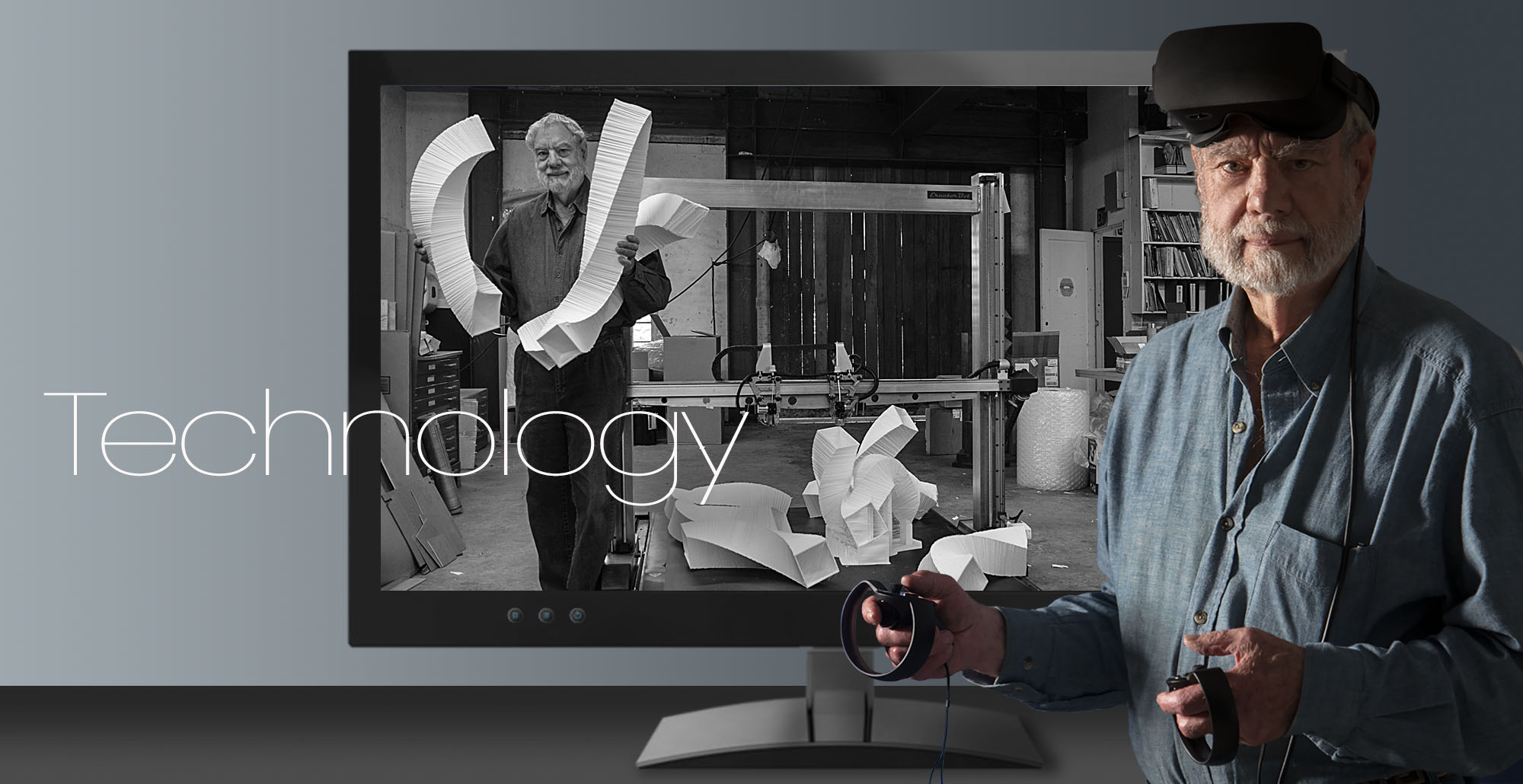Whatever technologies, new formats Beasley introduces or invents, the motive is not innovation for its own sake or in service of high tech curiosity. Beasley is a dyed in the wool fine artist who would never equate art and technology — technology to him is the tool to achieve fine art; and fine art is the poetic product of its use.

Coriolis Series / 3D Printed Sculpture
The Foundry
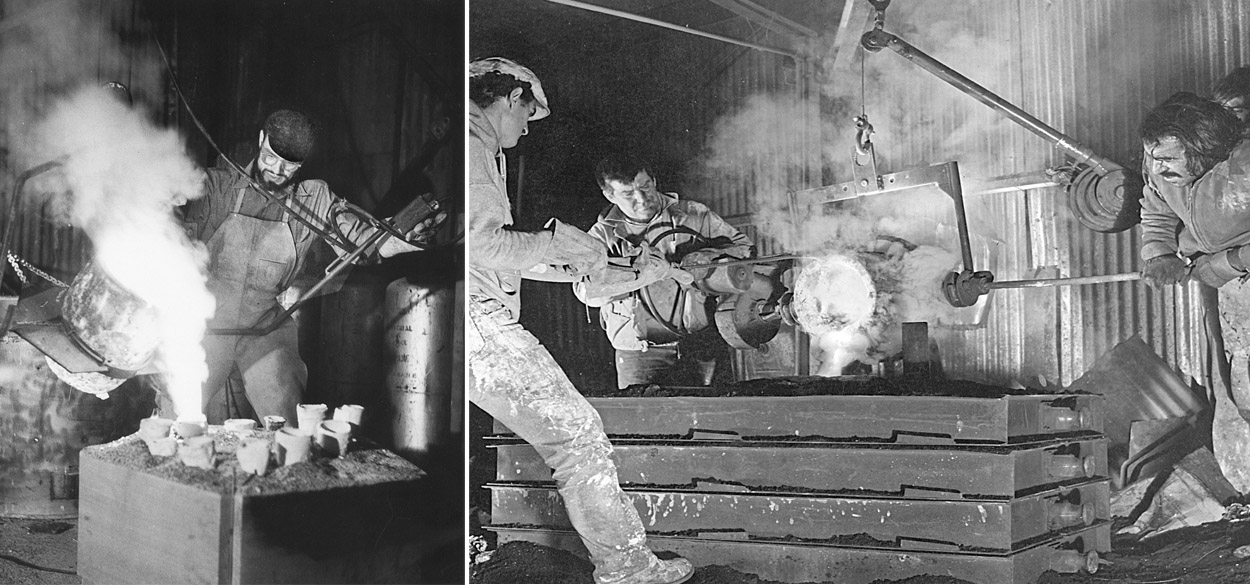 Bruce Beasley (left) Working with Peter Volkos (right)
Bruce Beasley (left) Working with Peter Volkos (right)
Acrylic Casting
 Bruce Beasley working on his large scale acrylic sculpture — Apolymon, 1970
Bruce Beasley working on his large scale acrylic sculpture — Apolymon, 1970
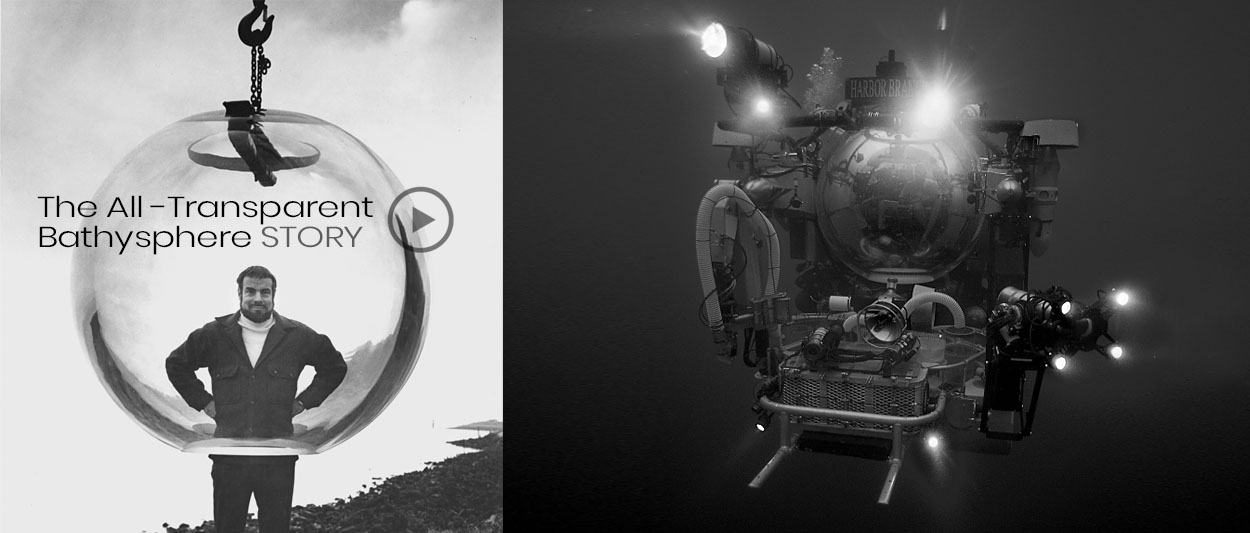
Bruce with the Bathysphere Acrylic Casting (left), The Johnson-Sea-Link submersible (right)
Computer Modeling
In the mid-2000s, Beasley was at the forefront of the field of sculptural 3D printing. To do this, he designed and oversaw the building of the largest digital printer exclusively for fine art sculpture in California. Today, he has not only advanced fine art applications of computer assisted design (CAD), but he has also become a leading practitioner and developer of Virtual Reality (VR) in the creation of his sculptures.
“You could say that the 3D technology has become the hand of the artist; it does not replace the artistic touch or ever render it obsolete, but certainly can enhance it. Technology never eliminates the artist’s presence. Think again of musical composition. Did Mozart actually play all the instruments in his symphonies? Of course, not. He wrote a code that the musicians faithfully followed. Any machine, any technology — be it a synthesizer in music, a paint brush, a 3D printer or VR— when used with the artist’s formal sensitivity and ability to awaken us emotively, results in very fine art. Today thanks to VR, I can go into my new, gravity-free virtual studio and with a stroke of my arm continue to explore combinations of shapes that I have made with the movement of my own body.”— Bruce Beasley
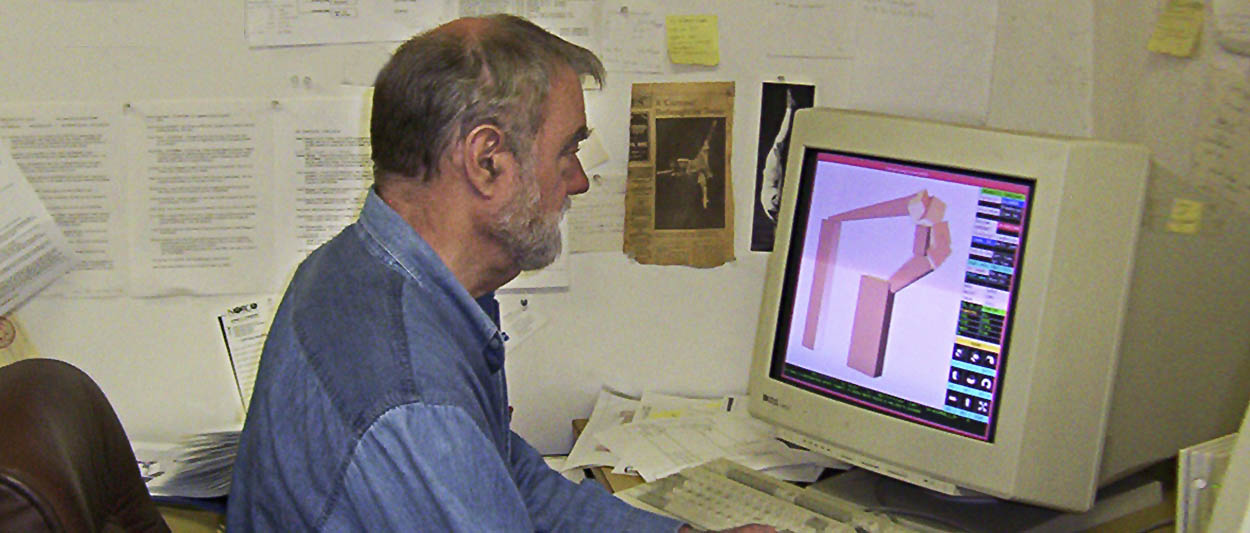
Bruce utilizing 3D modeling software with HP Computer
3D Printing
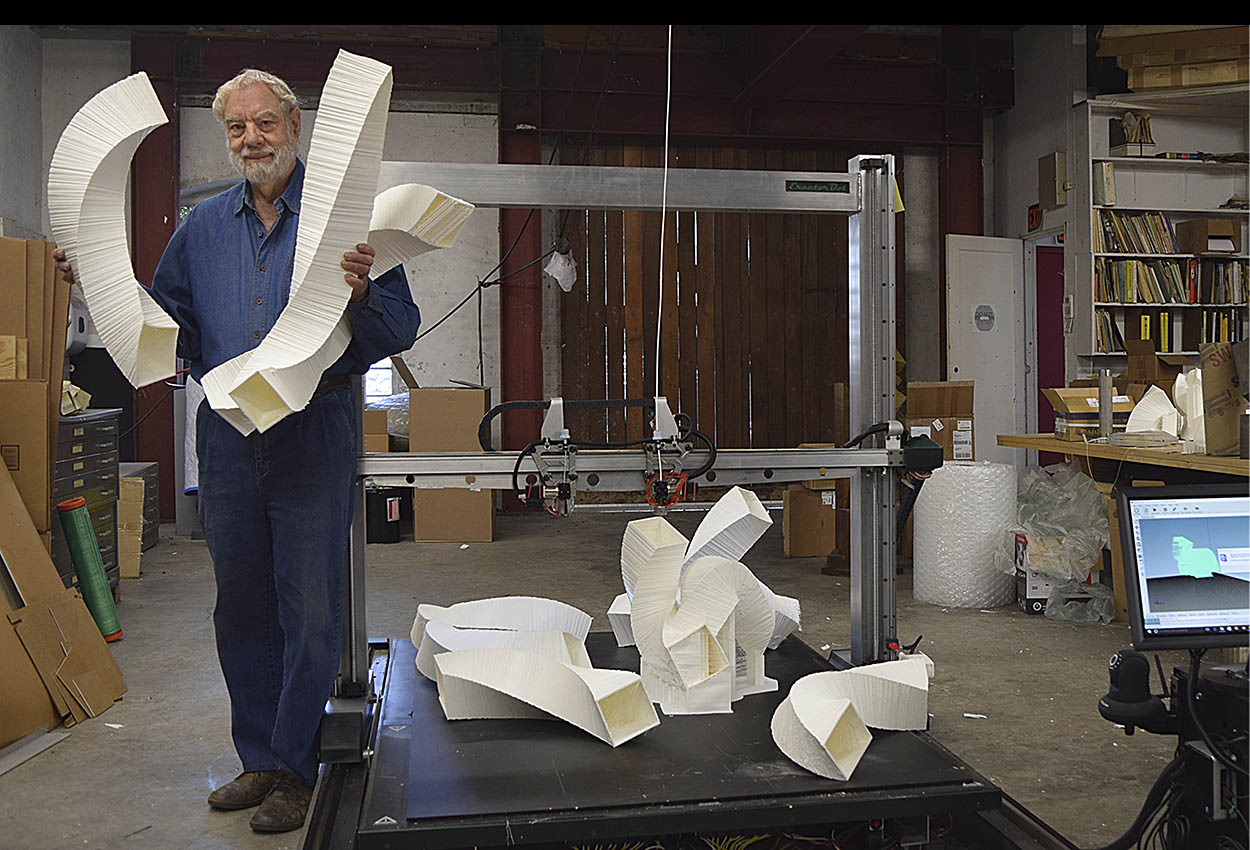
Bruce with 3D Printer
Virtual Reality
“The stylus is like an extension of my imagination, I make a mark and it appears in front of me in virtual space. The program and the stylus permit me to determine the features of the mark making. I can ‘draw’ large broad gestures that match human scale or small tight ones, I can coil and arc the line. The marks in space can be programmed to be linear or volumetric, rod-like, thick or thin, a rounded ribbon or a hexagonal one. It is completely spontaneous; if I like something I have just created, I continue, if not, I change directions. I can hit save when I make a shape that resonates and it will be translated into digital data I later study, alter and refine. It is quite astounding.— Bruce Beasley
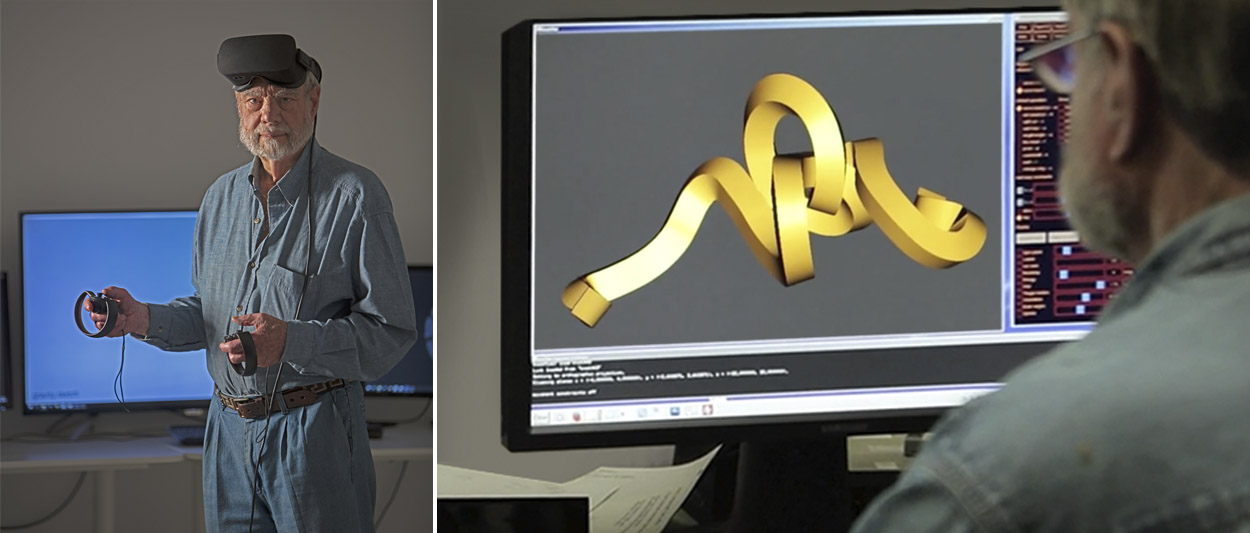
Bruce with VR headset (left)
